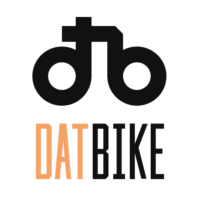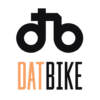Our mission is to convert all gasoline-powered motorbikes in Vietnam and SEA to electric. The theory is that if given a choice between an electric and a gas bike, everything else being equal, people will go electric. This is simply because electric bikes are strictly better for our planet.
The problem lies in the “everything else being equal” part. Of course not everything on the current electric offerings is the same as what people are used to on their gas bikes. It is our job to reduce this gap. The smaller the gap, the more people will convert to Dat Bike.
There is no need for marketing research to identify that performance is the pain point of electric bikes. In Vietnam, we all grow up on motorbikes and all the people we know use them daily. Everyone understands what needs to be done, given that the power of a typical electric bike is <2kW, only 1/3 of its gasoline counterpart. In addition, it only takes 5 mins to refill a 200km gas tank whereas the standard e-bike charge time is 10h for a total range of 50km. Of course, there are many other things in which electric bikes are inferior to gas. But performance, specifically power, range and charge time, is key to reducing the gap.
Dat Bike Weaver is the first electric motorbike that tries to bridge the difference: 5kW peak power with 100km of range. Charge time is 3 hours. This marks the first time that electric bikes are used by Vietnamese adults. In fact, none of our customers are U18, the dominant market for the rest of the electric bike industry.
Building upon the success of the Weaver, we are now developing a new model, which aims for a longer range and less charge time. More information on this model would be disclosed soon.
Our Competitive Advantage
We believe in vertical integration to make things better, cheaper and faster. One of the major reasons why it’s hard to make high performance electrics is because the industry relies on third-party, imported electric drivetrain and parts. Dat Bike is the only electric motorbike that originated from Vietnam, per the Ministry of Transportation. As a result, even at zero economies of scale currently, we have achieved the lowest cost vs performance ratio in the industry.
In order to do that, we design electric motorbikes from scratch to integrate ourselves to the existing local supply chain for gasoline bikes. This is one of the few areas in manufacturing where Vietnamese people have figured out a way to win against foreign invaders. On a typical gasoline bike, 98% of parts are produced domestically. It would be a waste to not utilize this competitive advantage. But surprisingly, Dat Bike is the only electric bike able to do so.
We design most parts on the bikes ourselves. This does not only include mechanical components such as frame, seat, suspension, but also the electric drivetrain. At Dat Bike, we developed the highest power and highest energy battery packs in the industry. Manufacturing of our battery packs are also done in-house at Dat Bike using a proprietary process. The high power output of a battery pack will be fed into a Dat-Bike-developed motor controller that is fine tuned to the characteristics of the battery pack. This is an example of the level of vertical integration that gives us many more knobs to control, thus achieving higher efficiency compared to our competitors.
However, vertical integration at Dat Bike doesn’t stop at parts working nicely together. We are building the only bike company in Southeast Asia that does R&D, manufacturing and direct-to-consumers distribution. For comparison, a typical gasoline bike brand would have the R&D entity somewhere in Japan, the manufacturing in Vietnam and the distribution through a dealership network. This means that we have a faster feedback loop for product development. As a result, we were able to release the Weaver within 15 months after the incorporation of Dat Bike, with hundreds of iterations afterwards. We are already on the development of our third model, aiming for launch mid next year. For reference, the average product development timeline in the industry is 5 years.
Doing D2C distribution for us means that the customer journey, from product discovery to purchase to after-sales services, is brought largely online and is totally centralized. This is in contrast to other brands where the distribution relies on offline dealerships that work in silos. Dat Bike’s founding team has a strong background in software, and we understand that what we are selling are ownership experiences that go beyond a physical product. These seamless experiences can only be done using software, where the bikes are smart and the ecosystem is connected. This is also the mechanism of a powerful snowball, where the more people use our bikes, the more data we will have to build better bikes. which leads to even more customers.
Our Products
Classic models
The Weaver – shipped 1st bike in Feb 2020
We shipped the first Weavers to our customers over a year ago. It is a bit embarrassing now to think about these first bikes and the decisions we made in the process of building them. It is exactly what you would expect to come out of a bunch of guys who had no experience building bikes, or shipping any physical products in general. But after that, we have made many updates to the bikes, on both software and hardware. Not only new customers receive them, but existing bike owners would also bring their bikes in for updates, sometimes with a fee. Everyone is excited about upgrading to the most up-to-date version of the product, which always offers great improvements on reliability, performance and aesthetics. We are now a legit bike company, with hundreds of happy customers.
Product Roadmap
Even though it does have some fans, the original Weaver received much criticism for its unorthodox design and lack of utility features. We think these criticisms are valid. The original Weaver, and even the new, were never meant for the mass consumers. Their purpose is to verify that performance is what is really missing on electric bikes, and that higher performance bikes would lead to more customers. We started Dat Bike with no experience and so little money, so this design is what we could come up with, and what we could afford building.
But the game has changed. We now have more talented people with more experience. We are also much more connected to the domestic supply chain. We have more money in the bank and could raise more funding. So it’s time to build more bikes. We have started working on a premium and high utility electric scooter (vespa style, not kick scooter) that targets the upper middle class. This will be the Tesla Model S version of Dat Bike. It will be built based on the same technology that we have developed for the Weaver and the Weaver 200, with a brand new electric motor to complete the in-house drivetrain as well. We will ship this next year. I also expect many more models will come after that.
Engineering
Inhouse drivetrain
What really gets us excited here is the technology we put behind the Weaver 200. We have always been a firm believer in the idea of vertical integration. It gives us many more knobs to control, which leads to more efficiency to build things better, cheaper and faster. In Weaver 200, we built a new speed controller from scratch to get more power on the same motor, at a much lower BOM cost. We also redesigned the battery packs to commoditize the cells we use, and to automate much of the assembly and QA process. This enables us to offset almost completely the current 250% price hike on battery cells and reduce production time for battery packs by 3 times. Once the cell market goes back to normal, we expect to achieve a much lower cost for our battery packs than ever before.
More importantly, speed controllers and battery packs make up two of the three major components on an electric drivetrain, with the remaining being motors. The drivetrain is the only fundamental difference between electric and gas motorbikes. If we can develop a drivetrain that is as high performance and as affordable as its gasoline equivalent, we can then build the electric version of every single gas bike model out there.
One nice thing about the new battery pack that we redesigned on the Weaver 200 is that it is capable of a much faster charging rate. We are underselling it by putting a limit of 1 hour for 100km, or 3 hour for 200km. This is because that’s the maximum output of a standard wall outlet. Therefore we will build higher-voltage charging stations to unblock the true potential of these batteries. They can deliver a charge rate of 100km per 15 minutes and a full charge should take less than 45 mins.
Manufacturing battery at Dat Bike
Dat Bike speed controller
The smart bike
That is not the only cool thing we added to the Weaver 200. After manually configuring software on people’s bikes so many times, we have now implemented over-the-air updates. Under the hood, the Weaver 200 is equipped with Bluetooth and Internet connectivity. But what this really means is that improvements will be added automatically to our customers, be it new drive modes, better tuned performance, or bug fixes. Their bikes literally get better overtime, an experience that they can’t find anywhere else.
To us, a better bike owning experience is one that is seamless and doesn’t get in the way of the customers. If we could make a bike quickly appear when a user needs it, and then just as quickly disappear when they are done, that would be the best scenario. People shouldn’t have to worry about their bikes. The reason why we are not in a sharing business is that the financials in this business model don’t work out for both us and the customers, given the cost of logistics to make it truly seamless and convenient.
Fortunately, we can still deliver a lot of this worry-free experience if we build things right. For example, a bike could run into problems, such as in the case of accidents. In this scenario, the customers should just need to press a button on their phone to request service, and then be on their way. The bike should lock itself waiting for a technician to come, fix it and then return it to the customer’s home. Using historical service data on Dat Bike’s servers and diagnostic information on the bike, pricing is shown transparently upon service request. In this screen, we could even add an option to call Grab so that the customer can conveniently continue their day.
We could do similar things for maintenance. The industry still resorts to generic manufacturer recommendations like “checkups every 3000km or 3 months”, with no regards to how people use their bikes or the actual status of what needs servicing. Even worse, during each service trip to the dealership, the salesperson there will try to upsell you for more. At Dat Bike, we already collect data on how each customer uses their bikes and retain all service history. Therefore we should be able to tell people exactly when their bikes would need service, exactly what will be done, and exactly how much it costs, all before people even bring their bikes in.
Manufacturing


